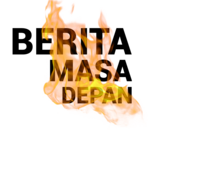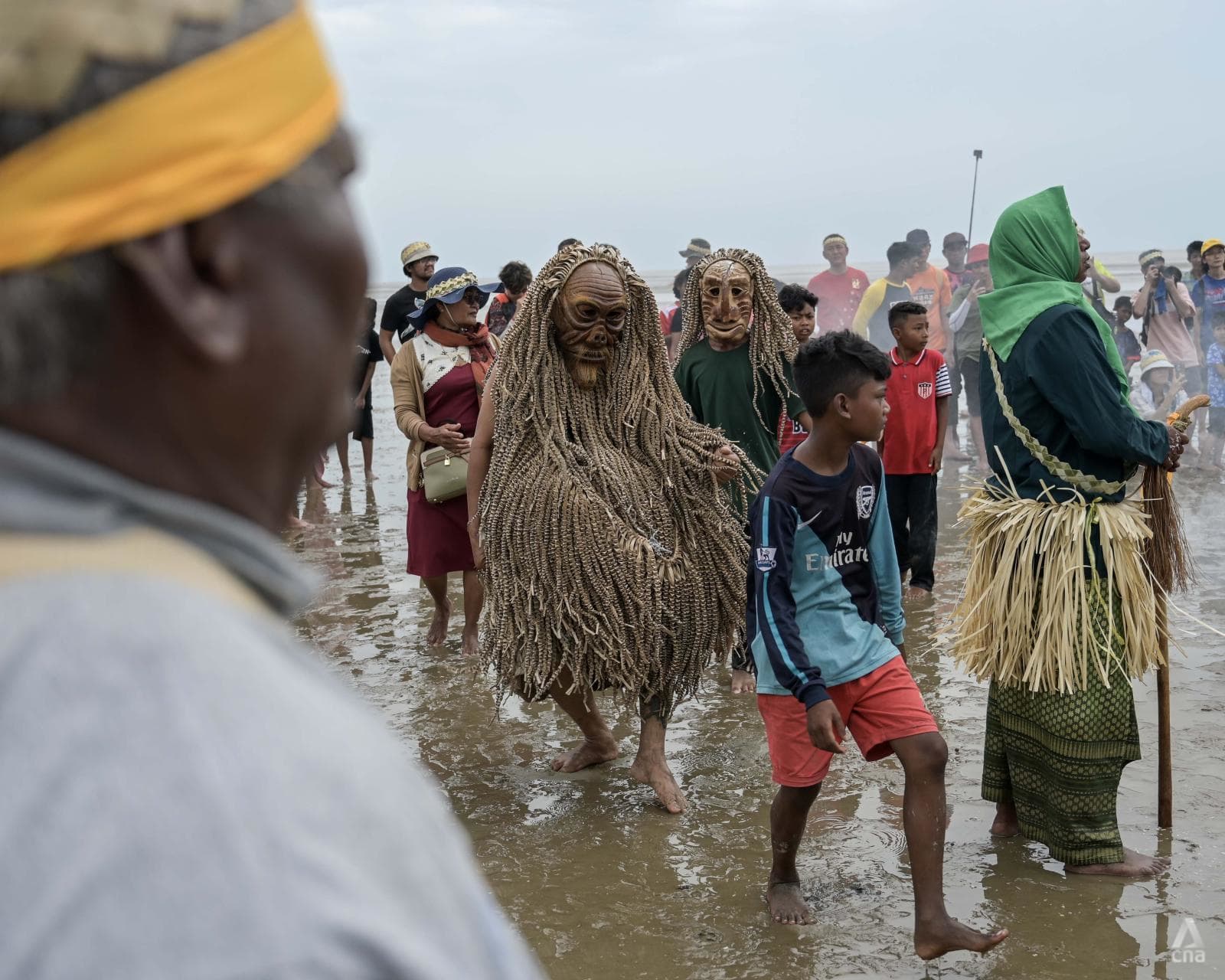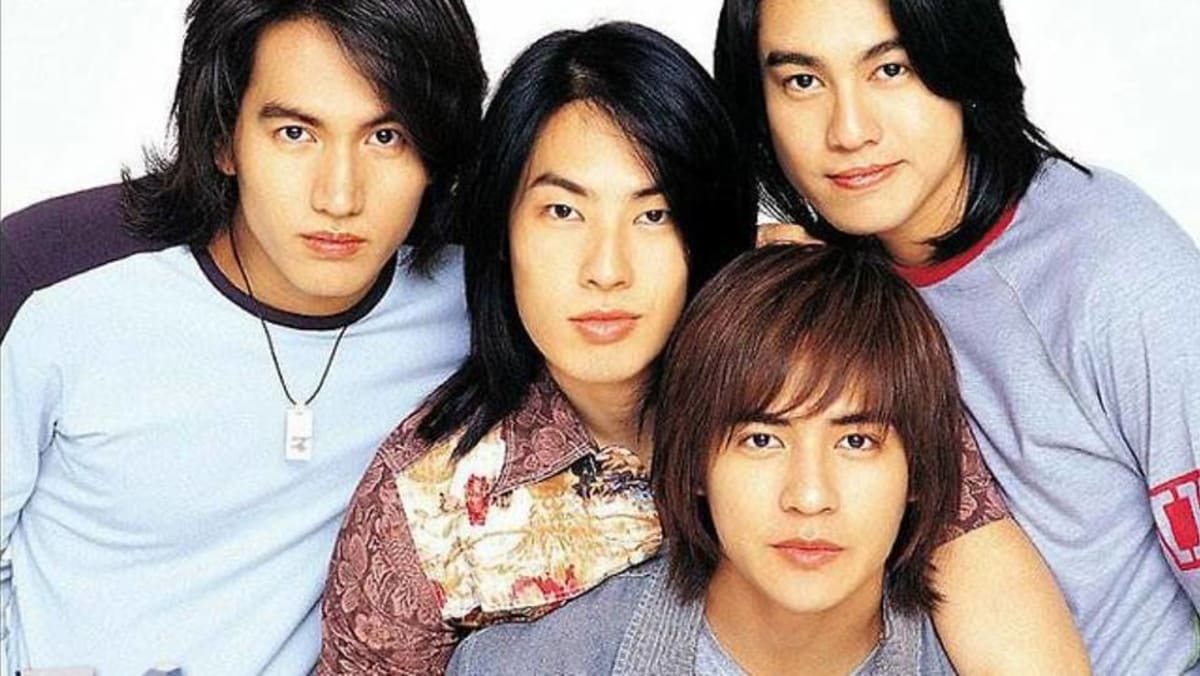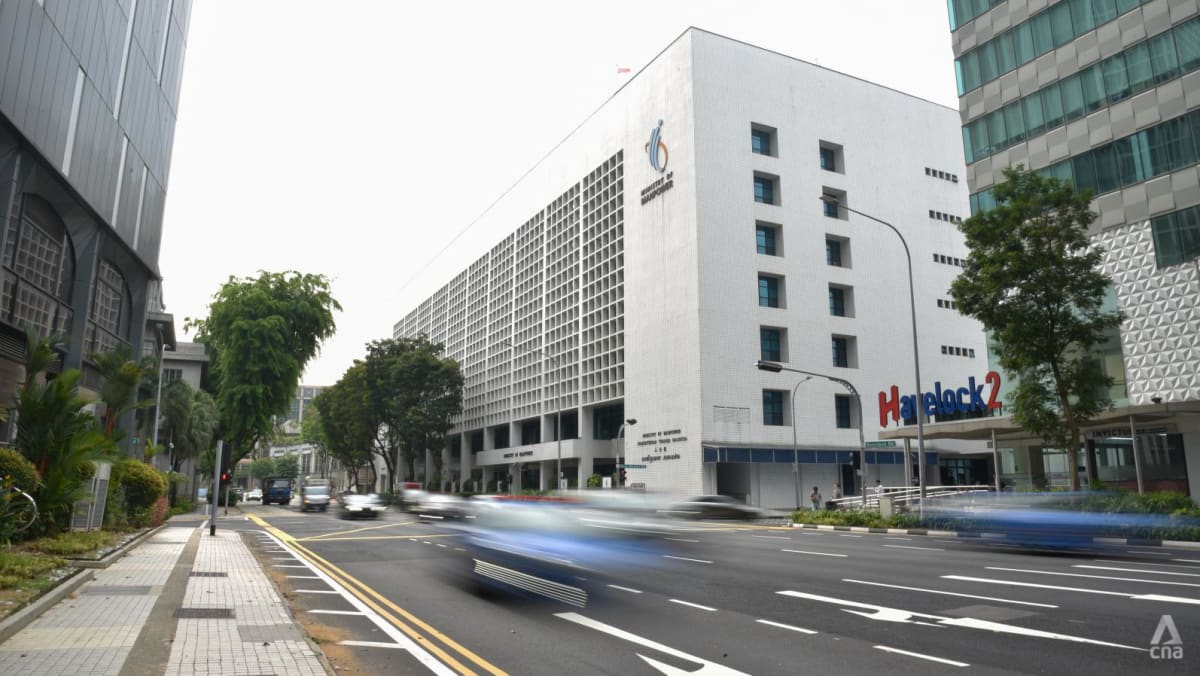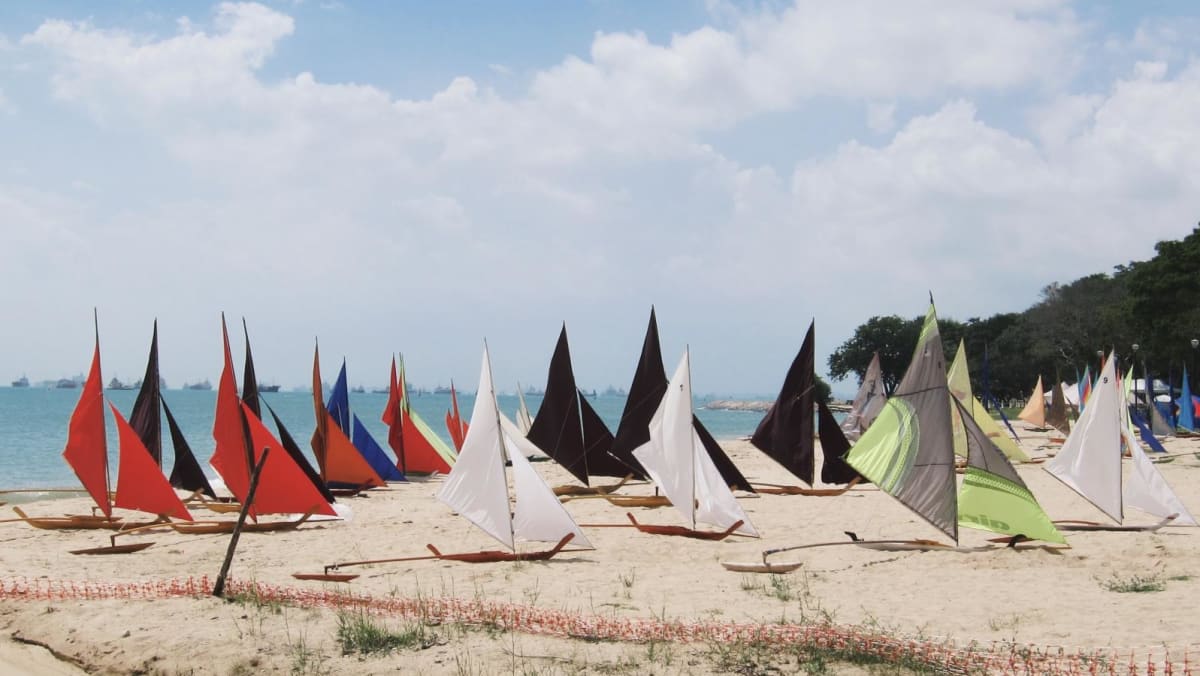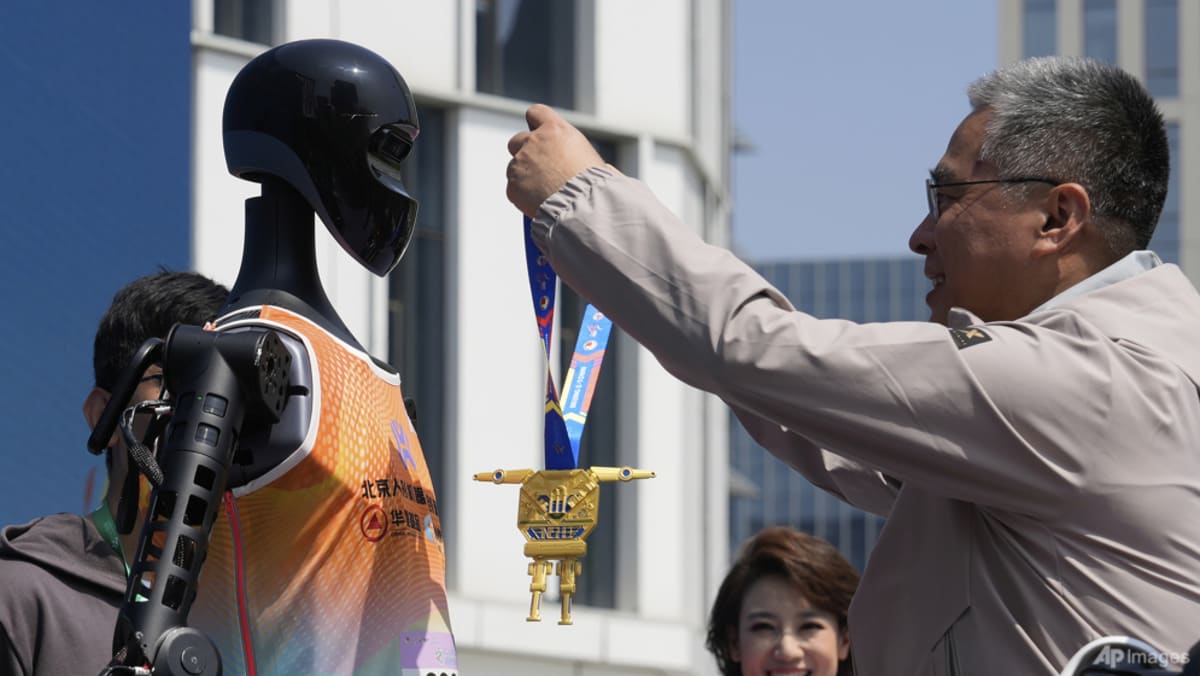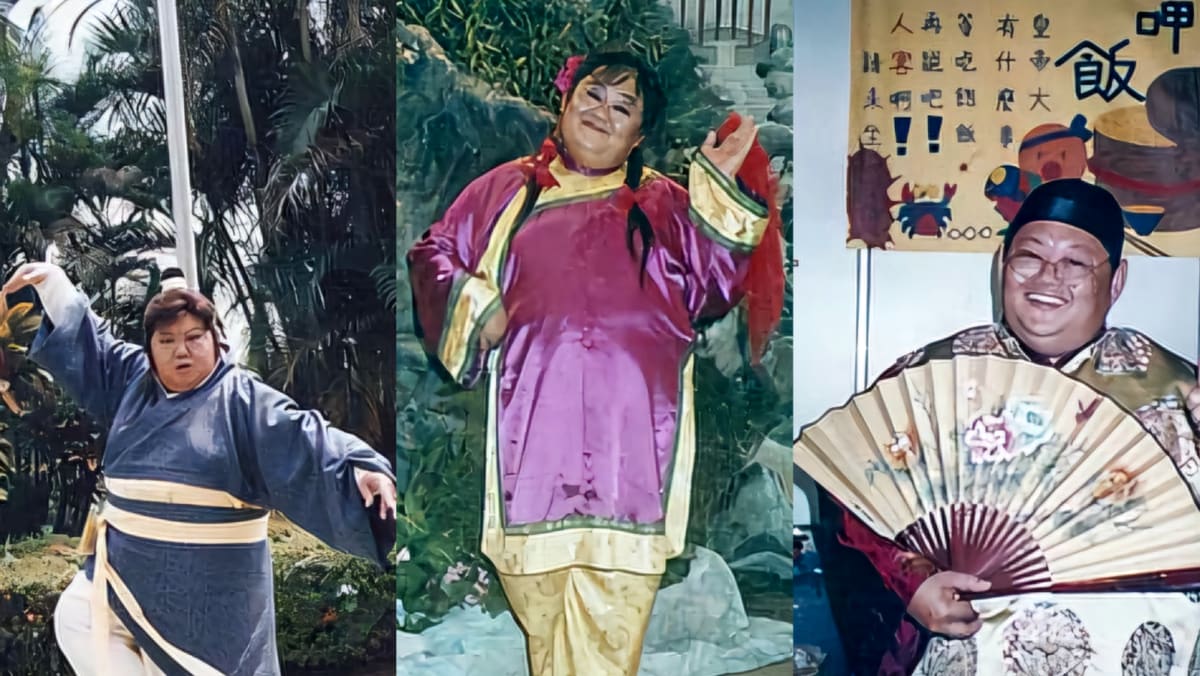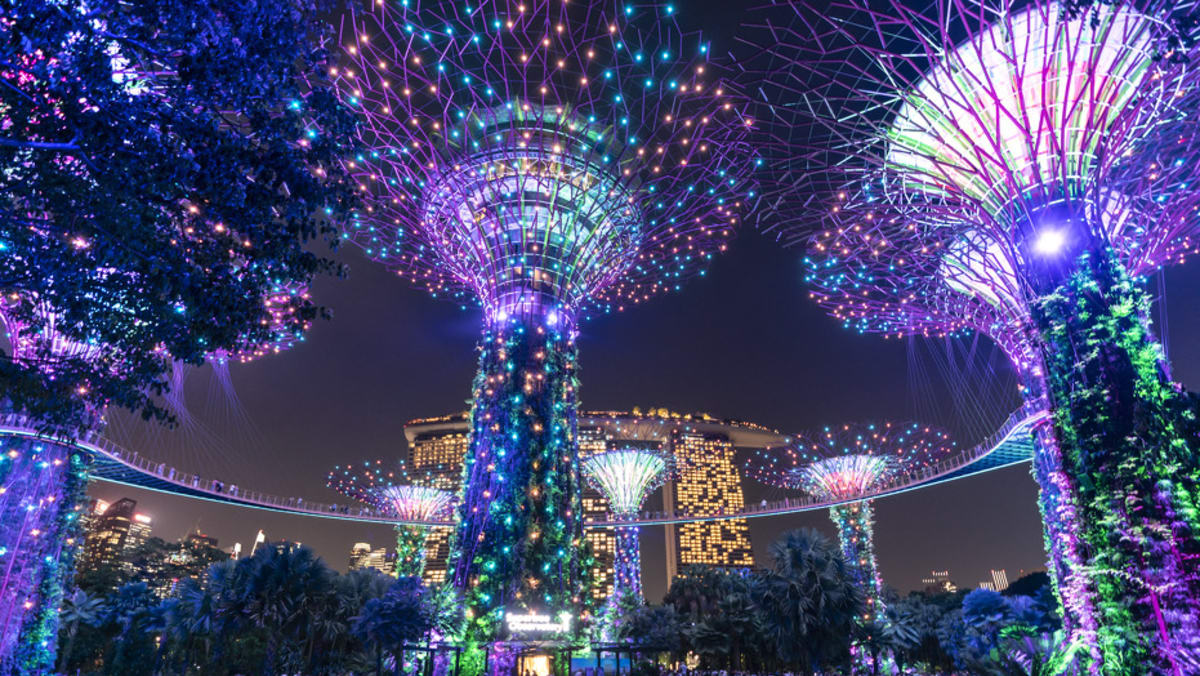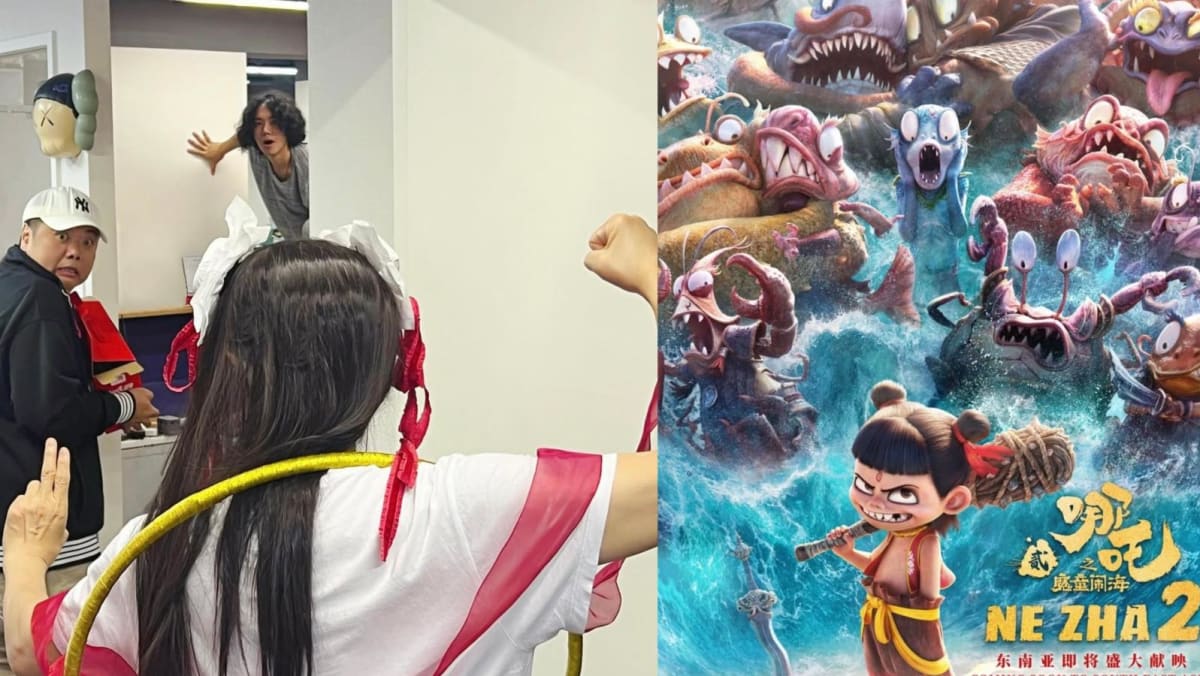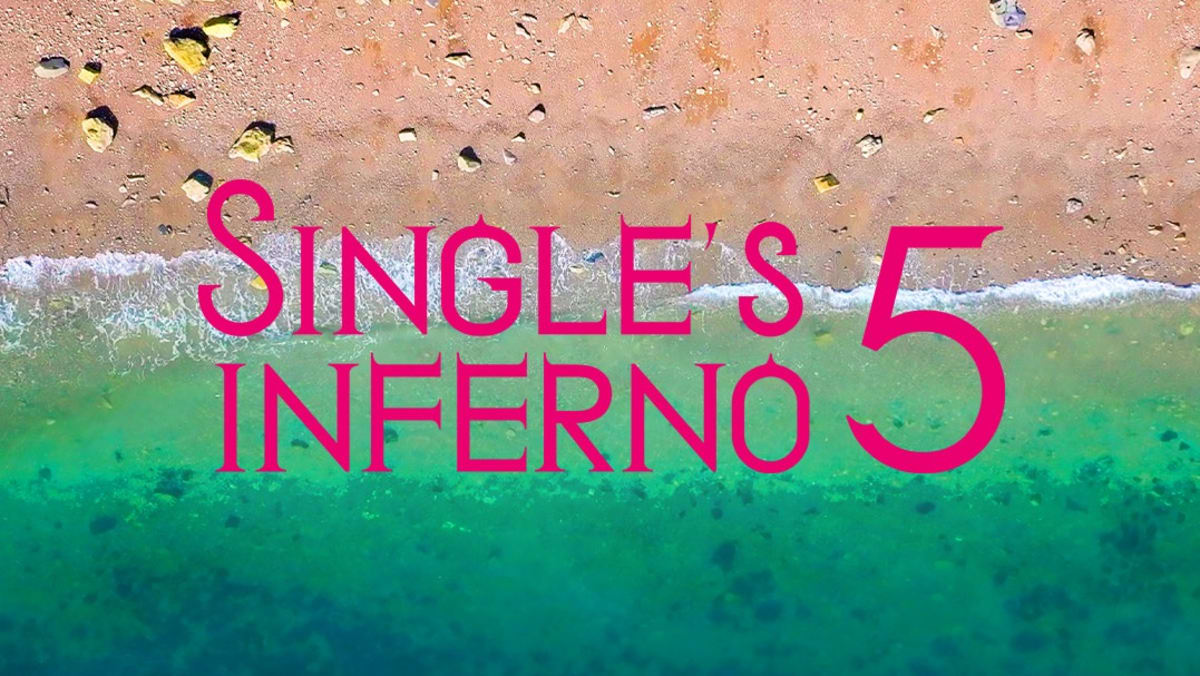It is a tradition that has been observed in Mr Daiman Peron’s family since he was five years old.
The 65-year-old is the tok batin or spiritual leader of the Mah Meri indigenous community residing on Carey Island in Selangor, Malaysia.
It's a role he had taken on since 2013.
Every year, he leads his community to observe Hari Moyang or Ancestors’ Day.
Mr Daiman said: “If we do not practise this, who else is going to do it? We have to keep it alive for the younger generations.”
This weekend, In Pictures looks at how the indigenous Mah Meri people in Malaysia celebrate an ancient tradition and why the event holds much significance for the community.
AN ANCIENT TRADITION
Ancestors' Day for the Mah Meri community typically occurs after the Chinese New Year.
This year, it fell on Feb 2, a date decided by Mr Daiman based on what his ancestors "reveal" to him.
On this day, the Mah Meri people believe that they are visited by the spirits of their ancestors and prepare offerings in the form of food and flowers as a sign of respect.
Rituals are also performed as the people pray for good fortune and safety for the coastal community.
 Mr Daiman Peron (right) is the spiritual leader of the Mah Meri indigenous community residing on Carey Island in Selangor, Malaysia. (Photo: CNA/Fadza Ishak)
Mr Daiman Peron (right) is the spiritual leader of the Mah Meri indigenous community residing on Carey Island in Selangor, Malaysia. (Photo: CNA/Fadza Ishak)
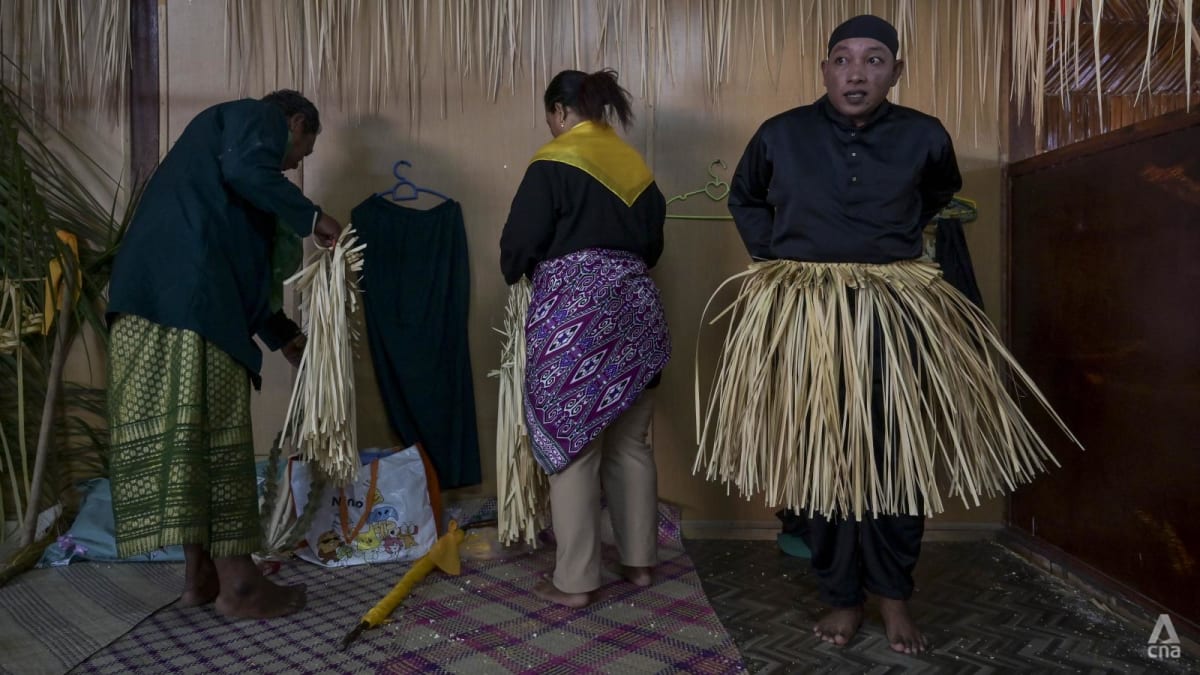 Villagers seen putting on outfits made from palm leaves as they prepared for a ceremony on Ancestors' Day. (Photo: CNA/Fadza Ishak)
Villagers seen putting on outfits made from palm leaves as they prepared for a ceremony on Ancestors' Day. (Photo: CNA/Fadza Ishak)
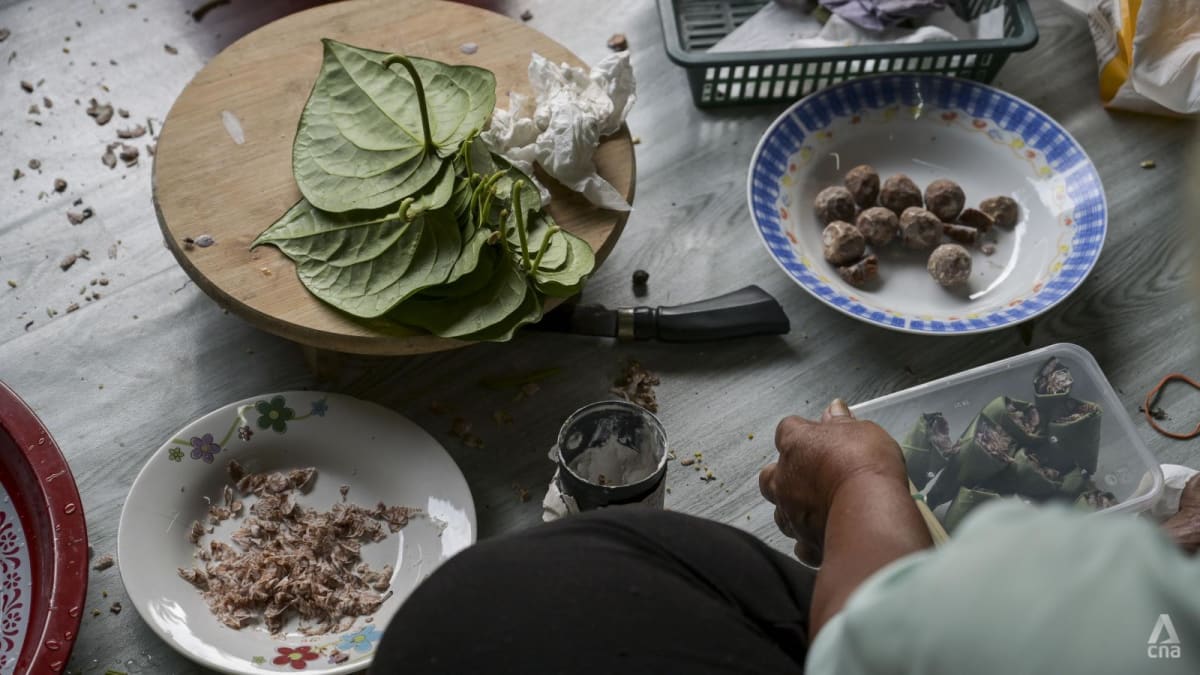 Shamans will chew on betel leaves, areca nuts and gambier before a ritual to mark Ancestors' Day. (Photo: CNA/Fadza Ishak)
Shamans will chew on betel leaves, areca nuts and gambier before a ritual to mark Ancestors' Day. (Photo: CNA/Fadza Ishak)
REMEMBERING THEIR ROOTS
The Mah Meri tribe, also known as the "Masked Men of Malaysia", were originally seafarers who settled on the shores of Selangor located on the west coast of Peninsular Malaysia.
There are now slightly more than 4,000 of them in Malaysia and they live in Sepang and on Carey Island.
For the people in Mr Daiman’s community, Ancestors' Day holds extra significance because they are the only ones who still perform the rituals on the beach, a tradition called puja pantai.
Under the guidance of shamans, participants make their way from the village to the beach, accompanied by music played on a violin and other traditional instruments.
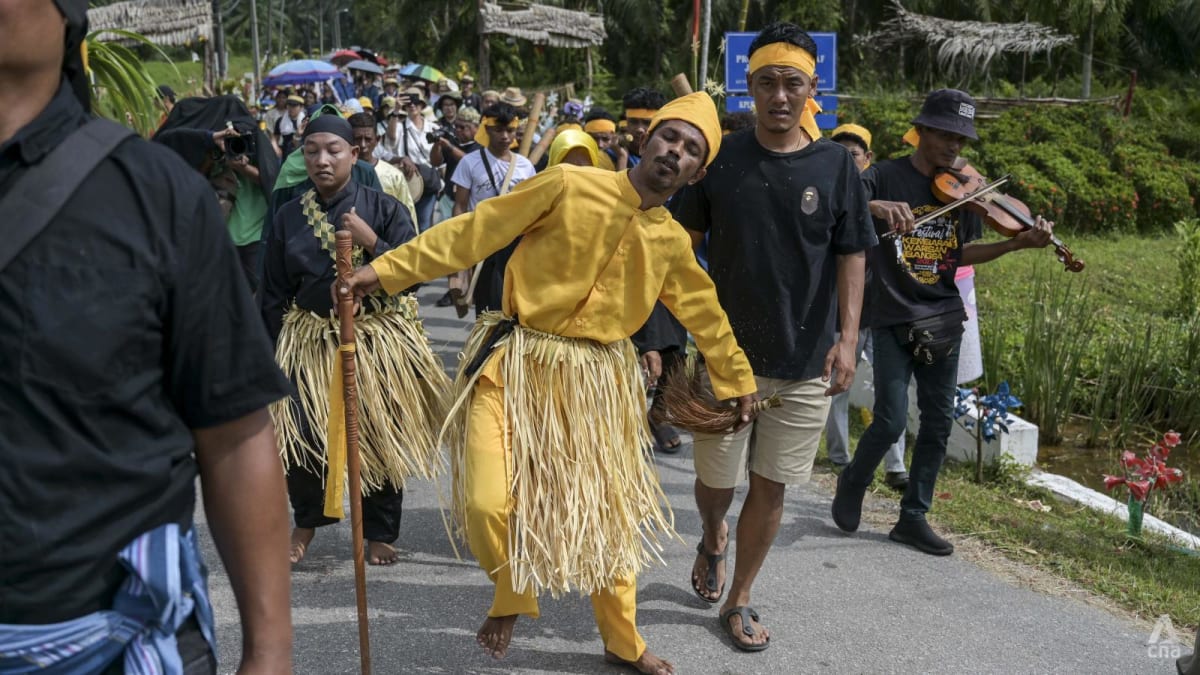 A shaman (centre) in a trance as he made his way to the beach. A man nearby played the violin as part of the procession. (Photo: CNA/Fadza Ishak)
A shaman (centre) in a trance as he made his way to the beach. A man nearby played the violin as part of the procession. (Photo: CNA/Fadza Ishak)
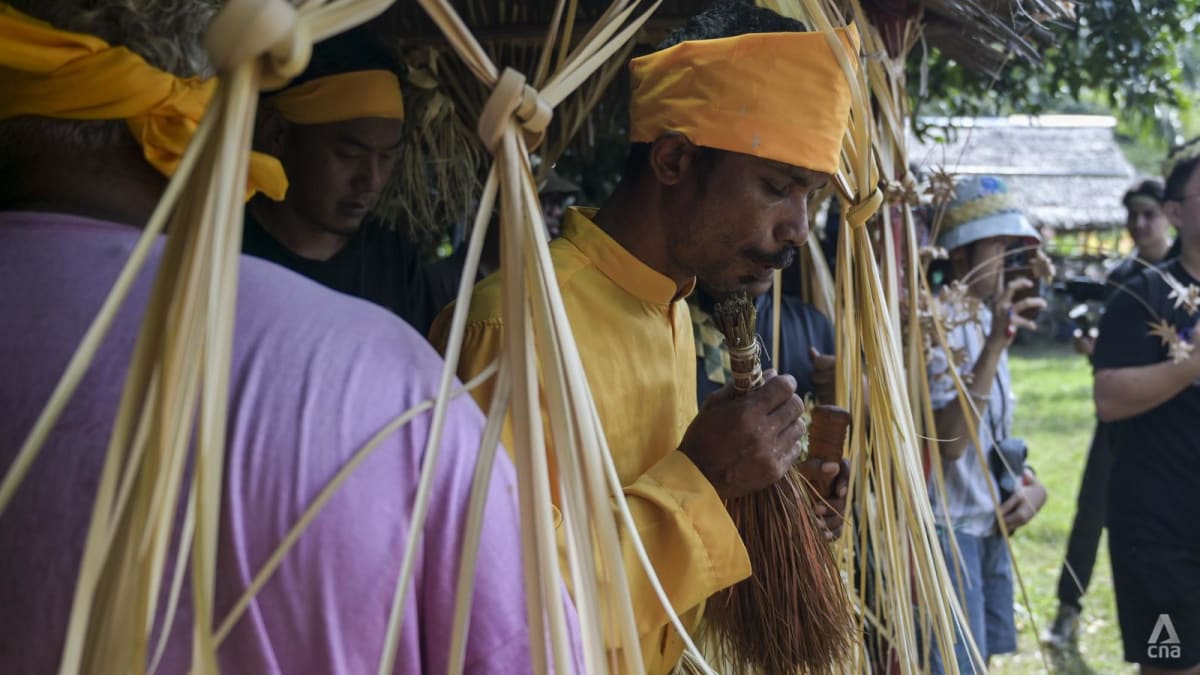 A shaman stopping at one of the houses to offer blessings before continuing a walk to the beach. (Photo: CNA/Fadza Ishak)
A shaman stopping at one of the houses to offer blessings before continuing a walk to the beach. (Photo: CNA/Fadza Ishak)
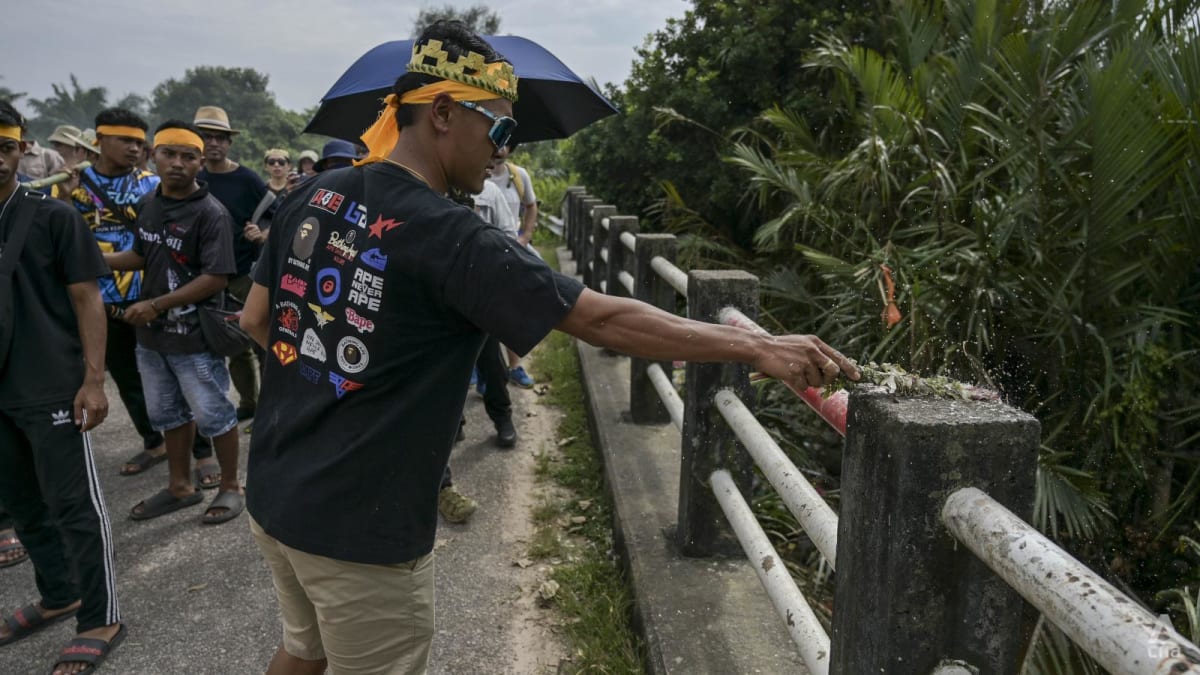 A man is seen "cleansing" a bridge as an entourage made its way to the beach on Ancestors' Day in Selangor, Malaysia. (Photo:CNA/Fadza Ishak)
A man is seen "cleansing" a bridge as an entourage made its way to the beach on Ancestors' Day in Selangor, Malaysia. (Photo:CNA/Fadza Ishak)
Upon reaching the beach, the villagers take a break as they wait for the water to recede before starting the ceremony.
They need to reach the sanggar, or the sacred platform that is made out of bamboo, built about 100m to 200m from the shore.
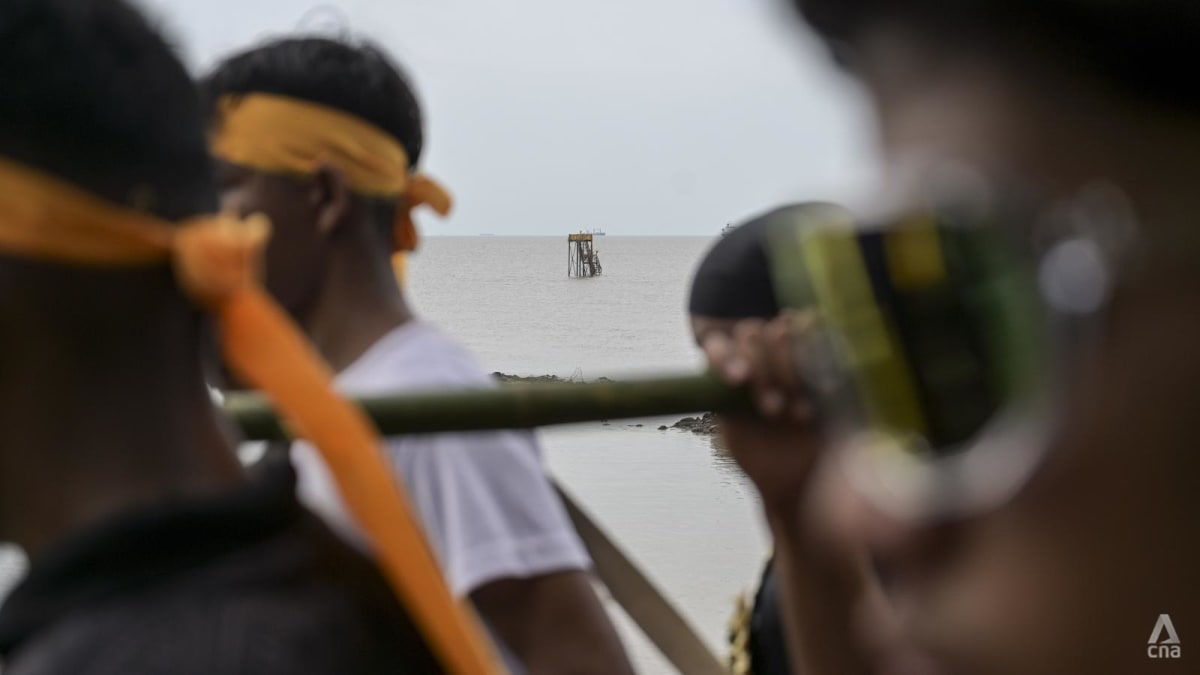 Located a distance from the shore was a sacred platform known as the sanggar. Participants had to wait for low tide before they can access the platform. (Photo: CNA/Fadza Ishak)
Located a distance from the shore was a sacred platform known as the sanggar. Participants had to wait for low tide before they can access the platform. (Photo: CNA/Fadza Ishak)
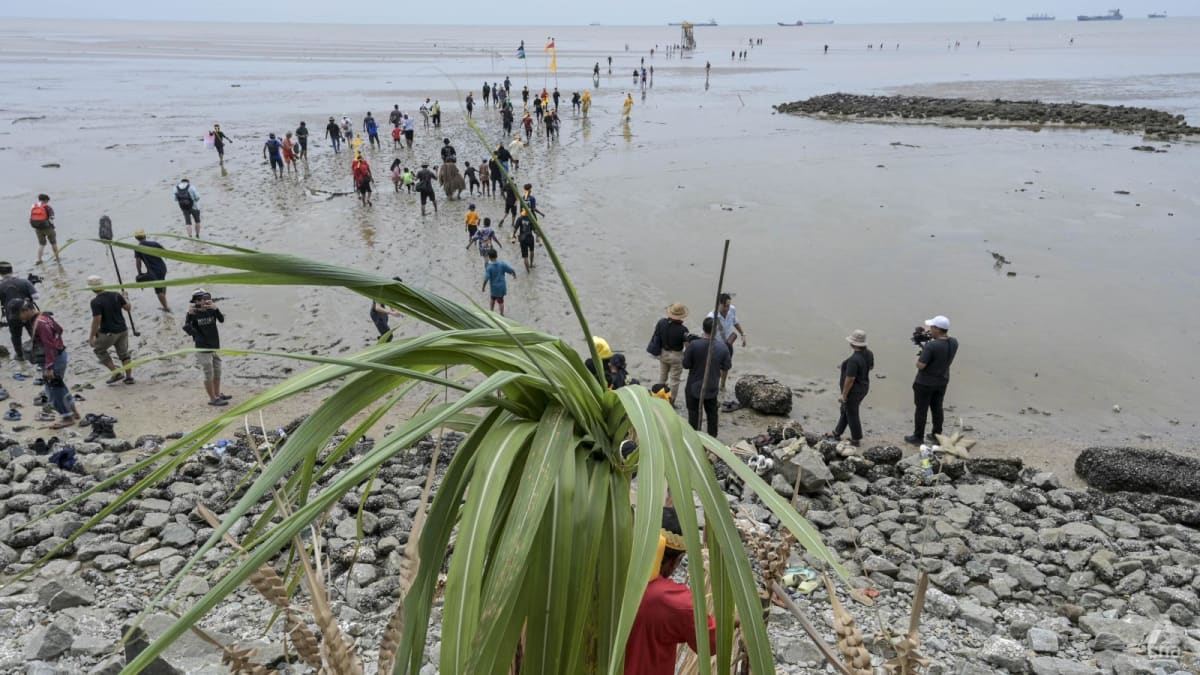 Once waters had receded, villagers made their way to a sacred platform near the shore to start a ritual on Ancestors' Day. (Photo: CNA/Fadza Ishak)
Once waters had receded, villagers made their way to a sacred platform near the shore to start a ritual on Ancestors' Day. (Photo: CNA/Fadza Ishak)
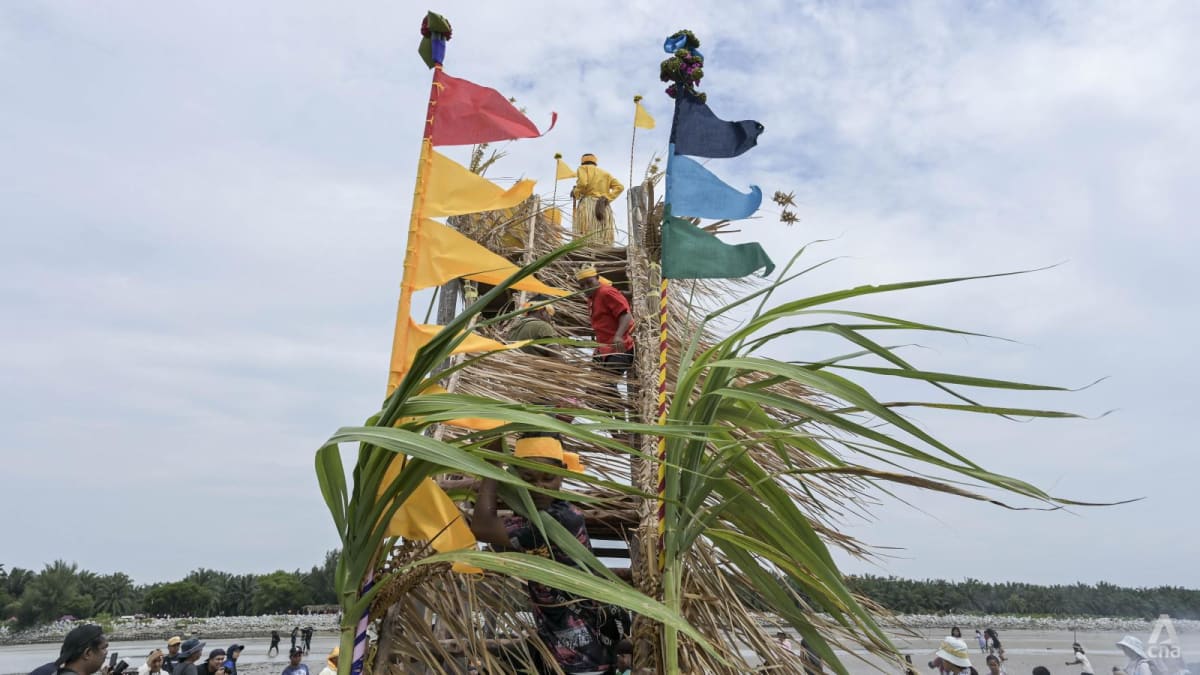 A shaman making his way up a sacred platform by the shore. (Photo: CNA/Fadza Ishak)
A shaman making his way up a sacred platform by the shore. (Photo: CNA/Fadza Ishak)
 A shaman going into a trance under a sacred platform. Incense was burned to invoke the spirits of ancestors. (Photo: CNA/Fadza Ishak)
A shaman going into a trance under a sacred platform. Incense was burned to invoke the spirits of ancestors. (Photo: CNA/Fadza Ishak)
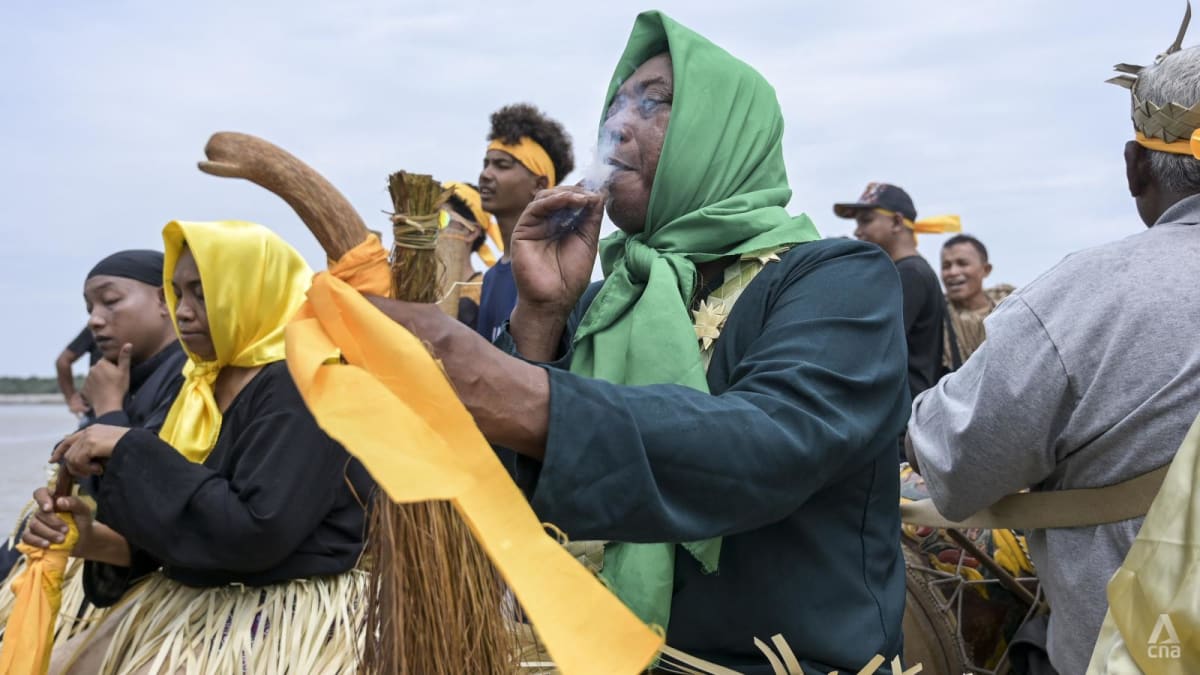 One of the shamans in a trance during a ritual on Ancestors' Day. (Photo: CNA/Fadza Ishak)
One of the shamans in a trance during a ritual on Ancestors' Day. (Photo: CNA/Fadza Ishak)
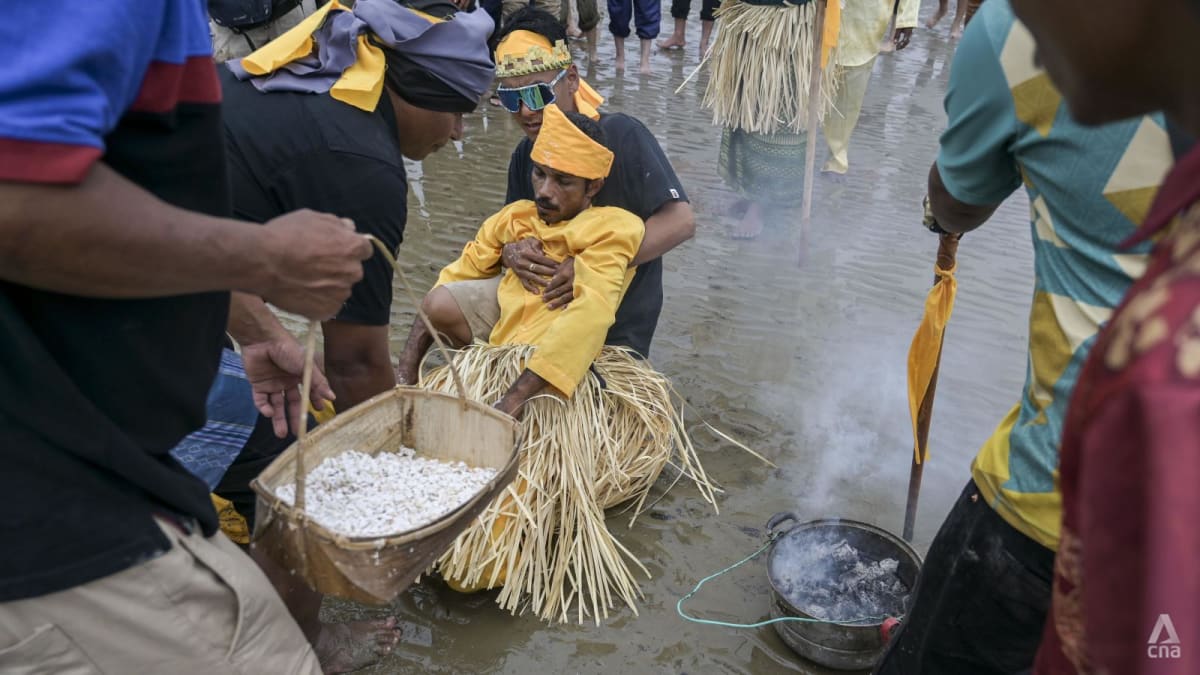 A shaman was helped by other villagers as he exited a trance state. (Photo: CNA/Fadza Ishak)
A shaman was helped by other villagers as he exited a trance state. (Photo: CNA/Fadza Ishak)
A DANCE FOR GOOD FORTUNE
Towards the end of the ceremony, many of the participants gather for a dance called main jo-oh to mark the end of the rituals.
Some wear costumes made from palm trees together with wooden masks that are handcarved by the Mah Meri people.
Children and teenagers start the dance by moving around in a circle, and the rest of the community will follow.
After the dance, the villagers burn joss paper and set off firecrackers at another nearby beach to mark the end of Ancestors' Day.
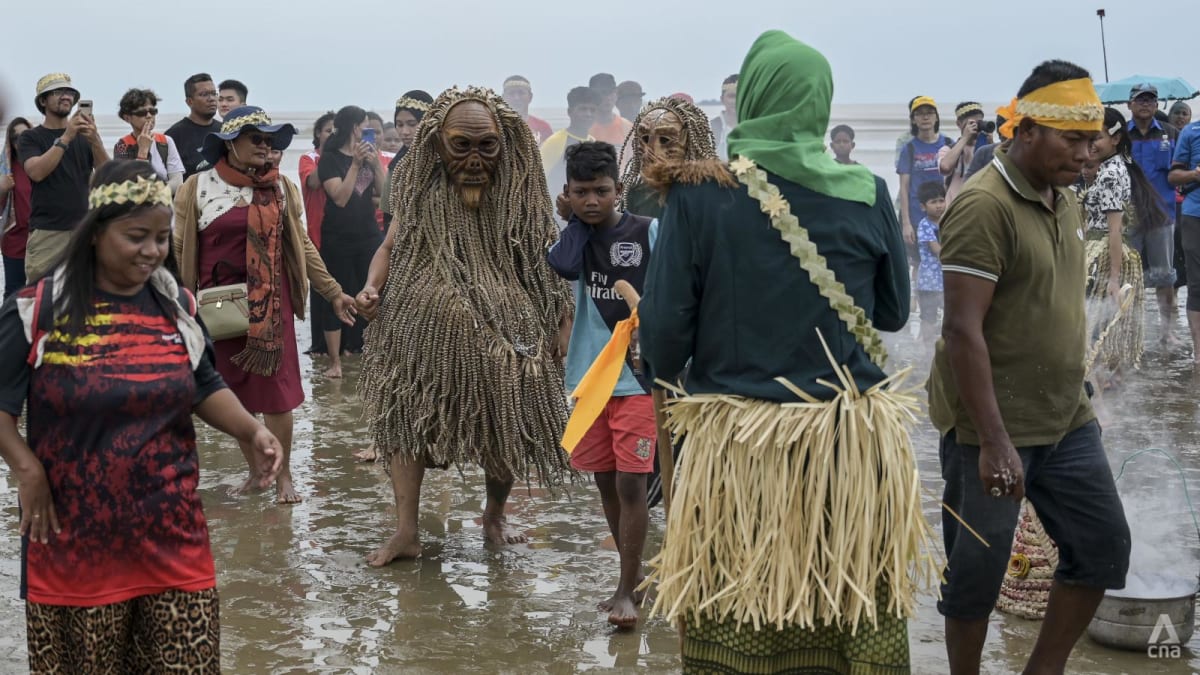 A man wearing a wooden mask and a costume made from palm tree leaves taking part in a final dance during a ritual on Ancestors' Day. (Photo: CNA/Fadza Ishak)
A man wearing a wooden mask and a costume made from palm tree leaves taking part in a final dance during a ritual on Ancestors' Day. (Photo: CNA/Fadza Ishak)
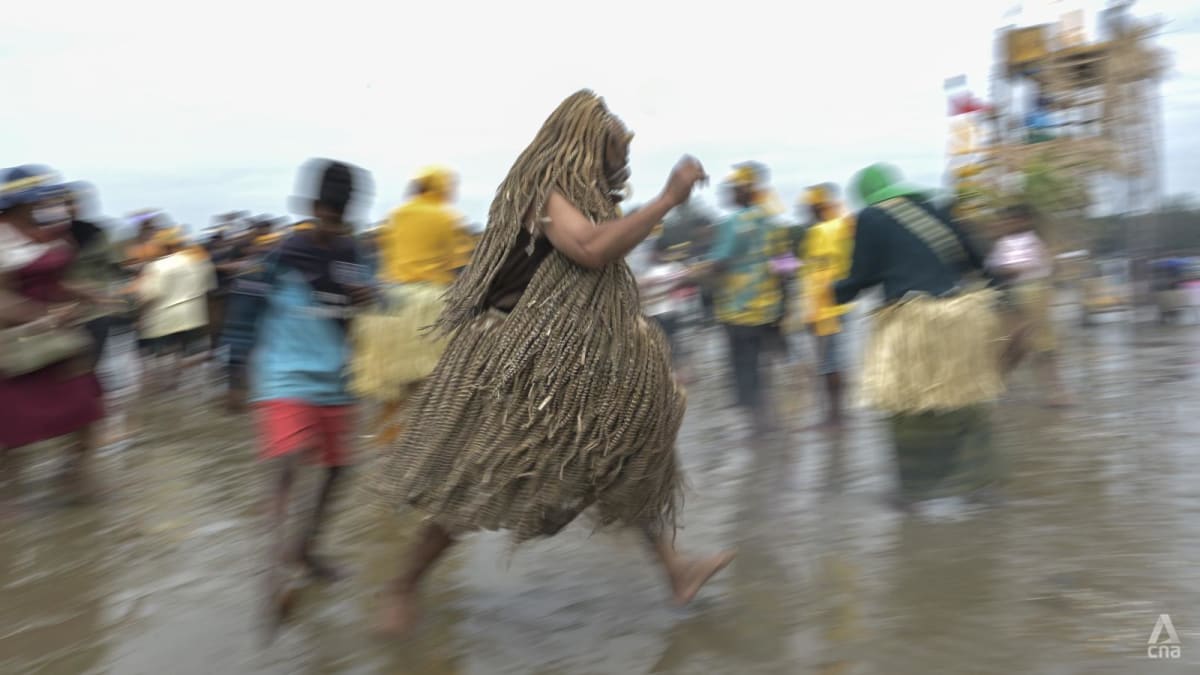 An outfit made out of palm tree leaves (pictured) typically takes a few months to put together. (Photo: CNA/Fadza Ishak)
An outfit made out of palm tree leaves (pictured) typically takes a few months to put together. (Photo: CNA/Fadza Ishak)
